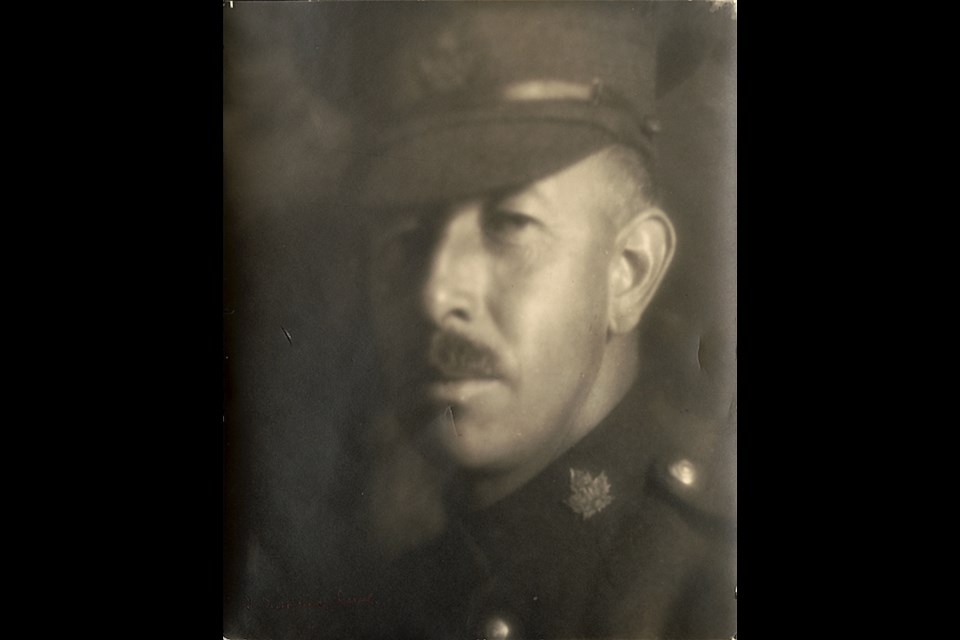NEWS RELEASE
OMAH HISTORY COMMITTEE
*************************
This year, the Orillia Museum of Art and History (OMAH) was incredibly fortunate to have Douglas Hunter, a multi-nominated, award-winning author, who holds a PhD in history from York University, as our speaker.
Douglas Hunter is a writer and a graphic artist in Port McNicoll. He has published more than 20 works of non-fiction with leading international publishers, writing extensively on historical matters.
His presentation focused on his latest book, Jackson’s Wars: A.Y. Jackson, the Birth of the Group of Seven, and the Great War (McGill-Queen’s University Press, 2021).
Alexander Young Jackson was a gifted individual who lived a very long life (1882 to 1974). Early on, he set the direction, along with fellow artists Tom Thomson and Lawren Harris, among others, for Canadian art to be uniquely representative of the nation.
Jackson’s life was beset by challenges from childhood. His father abandoned the family when he was nine years of age and, by age 12, Jackson was shouldering full-time employment. Although he was raised in Montreal, he was not part of the social network of influential, moneyed families who set the style in all things for privileged Canadians.
How did Jackson’s gifts survive the grinding down that having no money, no education and not much chance of either dealt him? Perhaps his giftedness in art and intellect enabled him to overcome. His opinionated personality was legendary. He said things that were out of bounds, and he was avoided, even ridiculed for it. He was also insightful, intelligent, and persistent. He was a prolific and eloquent letter writer, sharing his experience of war in detailed letters to friends, such as J.E.H. MacDonald.
Dr. Hunter reasoned that Jackson had established the structure for the Group of Seven as early as 1910. The Group of Seven is often said to have been formed in 1920, but its underpinnings were well in place before that time, including the group of artists, painting trips to the north country and setting objectives for the new movement.
What got in the way in those 10 years? The First World War was the game changer. Jackson, who joined up as an ordinary soldier, was wounded quite seriously at Sanctuary Wood. Deep shock made him initially unaware of the damage to his arm and shoulder. Effects of the wounds persisted and his recovery seemed interminable. His painting, titled Sanctuary Wood, conveys a feeling of hopeless destruction.
In 1916, Sir William Maxwell Aitken, a wealthy financier and newspaperman (titled Lord Beaverbrook in December 1916), had set up the Canadian War Memorials Fund. Capt. Ernest Fosbery, an Ottawa portrait artist and acquaintance of Jackson, was keen to have Canadian artists, not British artists, doing the painting and sketching of Canadians at war, and lobbied to that end. In so doing, he connected with Aitken (Beaverbrook).
Beaverbrook, who was only 39 at the time, met and interviewed Jackson (aged 33) in July 1916. Jackson arranged to borrow some issues of The Studio art magazine to show his paintings to Aitken. Jackson’s career as a war artist soon began, with the honorary title of lieutenant.
Jackson was a very productive artist. The Canadian War Museum is said to have hundreds of his war artworks, both paintings and sketches, in basement storage, unseen. Dr. Hunter characterized this as a travesty. The National Gallery of Canada, the Art Gallery of Ontario and the McMichael gallery also have large collections of Jackson’s work, particularly that work done after the war.
We thank Douglas Hunter for sharing his vast knowledge and passion for a time when Canadian art developed a unique and unforgettable form. OMAH has copies of Dr. Hunter’s book for sale, an informative and engaging narrative. Click on this link if you wish to purchase the book online from the OMAH shop.
His presentation was a great complement to the Carmichael Canadian Landscape Exhibition: Tradition Transformed, now in its 21st year. Don’t miss this incredible juried show.
The History Speaker Series will be on hiatus for December and will resume on Jan. 18, 2023, via Zoom. Popular Orillia historian Dave Town will be our guest speaker with his talk, the Black Swamp Gang.
“Around 1880 the whole of north Simcoe County was terrorized by the Black Swamp Gang, who robbed farms and then intimidated the farmers into silence through barn burnings and other threatened vandalism. The gang had formed around Big Sandy McDuff, the ‘baddest’ of the bad, a gigantic and temperamental Jarratt farmer — a tavern brawler who never lost a fight.”
Join us to hear historian Dave Town tell this largely untold story of the gang and the societal background that facilitated their exploits and the vigilantism of the era.
To receive a link to the talk, visit www.orilliamuseum.org/3 or call Monica at 705-326-2159.
Admission is free. Donations to OMAH are appreciated.
The OMAH History Committee thanks you for your loyal support in 2022. Stay tuned for dynamic speakers in 2022. Wishing you a safe and festive holiday season.
— Submitted by Mary Ann Grant
*************************
